This article was medically reviewed by Erik Kramer, DO, MPH. Dr. Erik Kramer is a Board-Certified Primary Care Physician at the University of Colorado. With over 15 years of experience, his clinical interests include obesity and weight management, diabetes care, and preventive care, as well as embracing a holistic approach to primary care. He received his Doctorate in Osteopathic Medicine (D.O.) from the Touro University Nevada College of Osteopathic Medicine and completed his residency at Central Maine Medical Center. Dr. Kramer is a Diplomate of the American Board of Obesity Medicine.
There are 13 references cited in this article, which can be found at the bottom of the page.
This article has been viewed 10,689 times.
Lactic acidosis (LA) occurs when your body produces lactic acid faster than you’re able to clear it out of your system. While you can fully recover with proper care, the condition requires medical treatment. LA usually doesn’t occur on its own, but rather has an underlying cause, such as drugs, alcoholism, infection, diabetes, or malignancy. The treatment varies depending on what that underlying cause is. The most important step is visiting your doctor for an exam, and then following their directions for flushing the lactic acid from your system.[1]
Steps
Seeking Medical Attention
-
1Contact your doctor if you experience symptoms of lactic acidosis. While you can fully recover from lactic acidosis, it’s a potentially serious condition that requires medical treatment. The earlier you spot the condition and receive treatment, the better your chances of a complete recovery. Learn the symptoms of LA and if you experience them, contact your doctor right away for an exam.[2]
- The major symptoms of LA are weak muscles, rapid breathing and heart rate, fatigue, and nausea or vomiting. Jaundice can also occur in advanced cases.
- Lactic acidosis can appear gradually, with the symptoms getting worse over days or weeks. This is common if the LA is caused by a drug or medication. Inform your doctor right away if you feel fatigued or unwell after starting a new medication.[3] #*If you lose consciousness or have trouble breathing, call 911 or the appropriate emergency number in your area.
-
2Measure the lactic acid in your bloodstream with a blood test. If your doctor suspects that you’re experiencing LA, they will order a blood test to check your lactic acid levels. If your lactic acid levels are high, then the doctor will start treatment for lactic acidosis.[4]
- A normal range for lactic acid in your blood is 4.5 to 19.8 milligrams per deciliter (mg/dL), which may also appear on labs as greater than 4 mmol/L.[5] A higher level could indicate lactic acidosis.
Advertisement -
3Increase the level of oxygen in your blood with an oxygen mask. Low blood oxygen causes your body to produce lactic acid, so replacing your blood oxygen is an important first step in combatting LA. The doctor will put a mask over your mouth and nose to provide you with a concentrated dose of oxygen. This should prevent your body from producing more lactic acid and making the condition worse.[6]
- This oxygen mask is not painful or invasive. It’s a routine treatment.
- If you were having trouble breathing or were in distress when you arrived at the doctor, they may put an oxygen mask on you before testing your blood. This is a common treatment.
-
4Use an IV drip to flush the lactic acid out of your bloodstream. In some cases, decreased blood volume can cause LA. The doctor will try to replace these fluids with an IV drip. This improves your circulation and flushes the lactic acid out of your body faster.[7]
- Depending on what caused your LA, the IV drip may be plain saline or some type of medication. Dichloroacetate is one medication used on certain types of LA.
- If your LA was caused by sepsis or another infection, the drip will include broad-spectrum antibiotics.[8]
Treating Underlying Issues
-
1Stop using medications that could cause lactic acidosis. Besides medical conditions, some drugs can also cause LA. If you’re on any medications, ask your doctor to review them and take you off any that could cause the condition.[9]
- Common medications that can cause LA are metformin, inhalers, epinephrine, propofol, and some antibiotics.
- Remember that just because you take any of these medications doesn’t mean you’ll get LA. Drug reactions like this are rare.
-
2Take antibiotics if your condition was caused by an infection. Sepsis, or a serious infection, is a common cause for LA. This is usually due to an infected injury or major illness like pneumonia. The most common treatment for sepsis is a heavy treatment of antibiotics in IV form. Afterward, the doctor may also order you to take oral antibiotics to prevent the infection from coming back. Follow the doctor’s instructions and take all the medication exactly as prescribed.[10]
- Always finish the entire course of antibiotics to kill the entire infection and prevent the growth of antibiotic-resistant bacteria.
- Sepsis is more common in people with underlying health issues like immunosuppression, HIV, or chronic illnesses.[11]
-
3Use supplemental oxygen if you have low blood oxygen concentration. Since lactic acid builds up in your blood if you're not getting enough oxygen, then your doctor may prescribe supplemental oxygen to keep your blood concentration up. You'll use an oxygen tank and mask to deliver the oxygen directly into your lungs. This helps filter out the lactic acid and prevent more from producing. Use the tank exactly as your doctor prescribes.[12]
- Breathing disorders can cause low blood oxygen concentration. You're at higher risk if you have COPD, severe asthma, or lung cancer.[13]
- Oxygen is flammable, so never allow open flames or smoke around the tank.
-
4Receive renal replacement therapy if the LA was from kidney problems. LA is sometimes caused by kidney failure or another problem that prevents your kidneys from properly filtering lactic acid out. Renal replacement therapy is a broad term for assisting the kidney’s function by filtering harmful toxins out of your body. The specific type you receive depends on what caused your LA and how well your kidneys are functioning.[14]
- A common renal replacement therapy is dialysis. Other types include hemofiltration and hemodiafiltration. Each one involves a session of pumping drugs into your veins and filtering out waste with an IV. The difference between the treatments is what type of drugs they use.
- All of these treatments require periodic visits to your doctor or a clinic for the treatment.
- These treatments don’t cure kidney diseases, but they do help them function normally and maintain your health.
-
5Quit drinking alcohol if you drink excessively. Heavy alcohol use and cirrhosis can also cause LA. If you regularly have more than 2 alcoholic drinks per day, then your drinking is considered excessive. This could negatively impact your liver, kidneys, and overall health, making you more susceptible to LA. Either reduce your drinking or stop entirely if you regularly drink heavily.[15]
- If you’ve been drinking excessively for a long time, you may need professional help to stop. Consult a counselor to enter an observed detox program.
-
6Avoid smoking to keep your immune system strong. Smoking suppresses your immune system and makes you more susceptible to infections. This could lead to sepsis and LA if you receive an injury. Try to quit smoking to benefit your overall health.[16]
- If you don’t currently smoke, then don’t start. This is the best option for preventing long-term damage.
References
- ↑ https://www.uptodate.com/contents/causes-of-lactic-acidosis
- ↑ https://medlineplus.gov/ency/article/000391.htm
- ↑ https://hivinfo.nih.gov/understanding-hiv/fact-sheets/hiv-and-lactic-acidosis
- ↑ https://www.uofmhealth.org/health-library/hw7871
- ↑ https://www.ucsfhealth.org/medical-tests/003507
- ↑ https://www.uofmhealth.org/health-library/hw7871
- ↑ https://jasn.asnjournals.org/content/12/suppl_1/S15
- ↑ https://www.ncbi.nlm.nih.gov/books/NBK470202/
- ↑ https://medlineplus.gov/ency/article/000391.htm
- ↑ https://www.uofmhealth.org/health-library/sts15452#sts15452-sec
- ↑ https://www.cdc.gov/patientsafety/features/get-ahead-of-sepsis.html
- ↑ https://www.ucsfhealth.org/education/the-need-for-supplemental-oxygen
- ↑ https://medlineplus.gov/lab-tests/blood-oxygen-level/
- ↑ https://ccforum.biomedcentral.com/articles/10.1186/cc9404
- ↑ https://medlineplus.gov/ency/article/000391.htm
- ↑ https://www.uofmhealth.org/health-library/sts15452#sts15452-sec
- ↑ https://pubmed.ncbi.nlm.nih.gov/15308499/

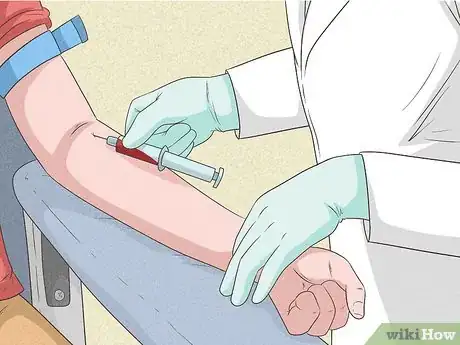


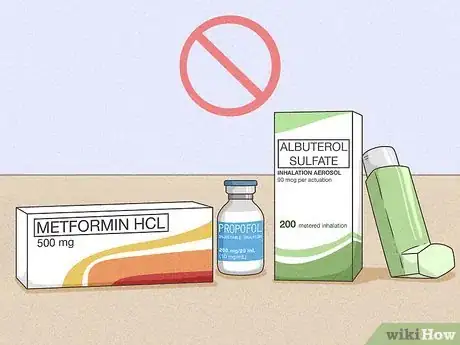

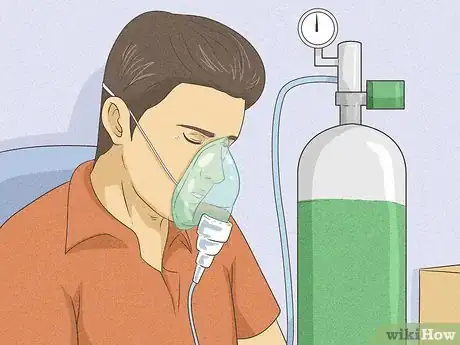



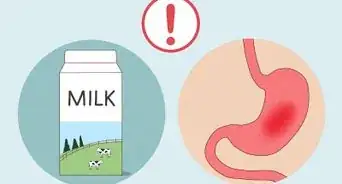
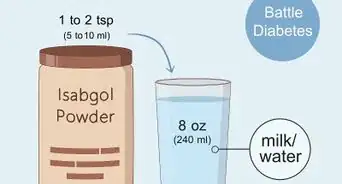



















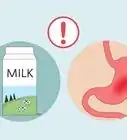
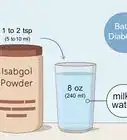





































Medical Disclaimer
The content of this article is not intended to be a substitute for professional medical advice, examination, diagnosis, or treatment. You should always contact your doctor or other qualified healthcare professional before starting, changing, or stopping any kind of health treatment.
Read More...